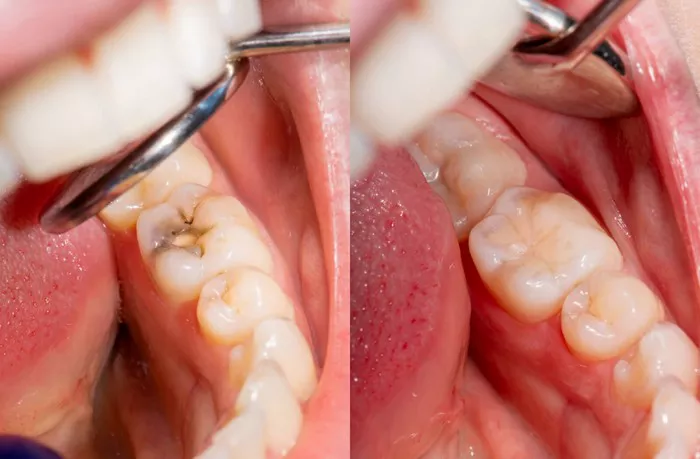Dental fillings are one of the most common restorative procedures performed by dentists. They are used to repair cavities, restore the structure of broken teeth, and prevent further decay. One of the most frequent questions patients have is: how long do fillings take at the dentist? The answer can vary based on several factors, including the size of the cavity, the type of filling material used, and the patient’s oral health condition. This article provides a detailed overview of the time involved in getting a dental filling and everything related to it.
Understanding the Dental Filling Procedure
Before diving into the time estimate, it’s important to understand the steps involved in the dental filling process:
1. Examination and Diagnosis
Before a dentist starts the procedure, a comprehensive examination is performed. This may include visual inspection and dental X-rays to identify the location and extent of the decay. This diagnostic step generally takes about 10–15 minutes.
2. Anesthesia Application
If the cavity is deep or near a nerve, the dentist will administer a local anesthetic to numb the area. This takes around 5–10 minutes to inject and another 5–10 minutes for the numbing effect to kick in. Some patients require longer if their anatomy makes the nerve block more challenging.
3. Tooth Preparation
Once the area is numb, the dentist will use a dental drill or laser to remove the decayed portion of the tooth. This process typically takes between 10–20 minutes depending on the size and depth of the cavity.
4. Filling the Cavity
The time to apply the filling material varies based on the type of filling:
Composite Resin (White Fillings): 15–30 minutes
Amalgam (Silver Fillings): 10–20 minutes
Gold or Porcelain Inlays/Onlays: Requires 2 visits; preparation in one (30–45 minutes) and placement in another
5. Shaping and Polishing
Once the filling material is placed, the dentist shapes it to fit the bite and polishes it for a smooth surface. This adds another 5–10 minutes to the overall time.
Average Time for a Filling Appointment
The total time for a dental filling appointment usually ranges from 30 minutes to 1 hour per tooth. Here’s a general breakdown:
Small filling: 20–30 minutes
Medium filling: 30–45 minutes
Large or multiple fillings: 45–60+ minutes
Factors That Influence Filling Time
1. Number of Cavities
If multiple teeth need fillings in one appointment, expect the procedure to take longer. Each tooth must be cleaned, filled, shaped, and polished separately.
2. Location of the Cavity
Fillings in front teeth (incisors) may take less time than molars, which are harder to access and require more complex shaping for a proper bite alignment.
3. Patient’s Comfort and Anesthesia Response
Some patients may require more time for anesthesia to take effect or may need breaks during the procedure due to anxiety or sensitivity.
4. Type of Filling Material
Composite fillings take longer than amalgam because they are applied in layers and cured with a special light. Porcelain and gold inlays involve lab work and require multiple visits.
5. Dentist’s Technique and Experience
An experienced dentist may perform the procedure more efficiently without compromising quality. Modern techniques and tools can also reduce chair time.
Filling Material and Its Impact on Duration
Composite Resin
Composite resin is popular for its aesthetic match with natural teeth but is technique-sensitive. Each layer must be hardened with a curing light, which adds time. Expect about 30–45 minutes per tooth.
Amalgam
Amalgam is quicker to place because it doesn’t require layering. It sets relatively fast but requires care to prevent contamination during placement. Average time: 20–30 minutes per tooth.
Gold and Porcelain
These fillings require a mold of the tooth to be sent to a lab, making the process more time-consuming. The first visit includes tooth preparation (30–45 minutes), while the second visit for placement may take 20–30 minutes.
How Long Does It Take for Fillings to Set?
Different materials set at different speeds:
Composite: Cures instantly with a curing light. You can eat soon after the numbness wears off.
Amalgam: Takes 24 hours to fully set. Avoid hard chewing on the filled side for a day.
Gold/Porcelain: Cement sets in a few hours, but full bonding strength builds over the day.
Aftercare and Recovery Time
Post-Procedure Numbness
The numbness from anesthesia may last 1–3 hours. Avoid chewing or biting your cheek during this time.
Sensitivity
Mild sensitivity to hot, cold, or pressure is normal for a few days to weeks after a filling. If it persists longer, contact your dentist.
Bite Adjustment
If your bite feels off after the filling, a quick adjustment may be needed, usually taking 5–10 minutes during a follow-up visit.
When Multiple Fillings Are Needed
For extensive decay requiring several fillings, dentists may break treatment into two or more sessions. A full-mouth rehabilitation could take multiple visits over weeks or months. In some cases, same-day treatment with sedation can allow for more extensive work in one appointment, taking 2–3 hours or more.
Do Children’s Fillings Take the Same Time?
Pediatric dental fillings generally take less time due to smaller teeth and early intervention. However, additional time might be needed for cooperation, behavior management, and anesthesia application. On average, children’s fillings take 20–30 minutes.
Conclusion
So, how long do fillings take at the dentist? Most dental fillings take between 30 minutes to 1 hour per tooth. However, the exact duration depends on the complexity of the case, materials used, and patient comfort. While the procedure is relatively quick, its importance in preventing further decay and restoring function is significant. Preparing in advance and understanding what to expect can help make your dental visit smoother and less stressful. Always follow your dentist’s advice and keep up with regular dental check-ups to maintain a healthy smile.
Related topics

